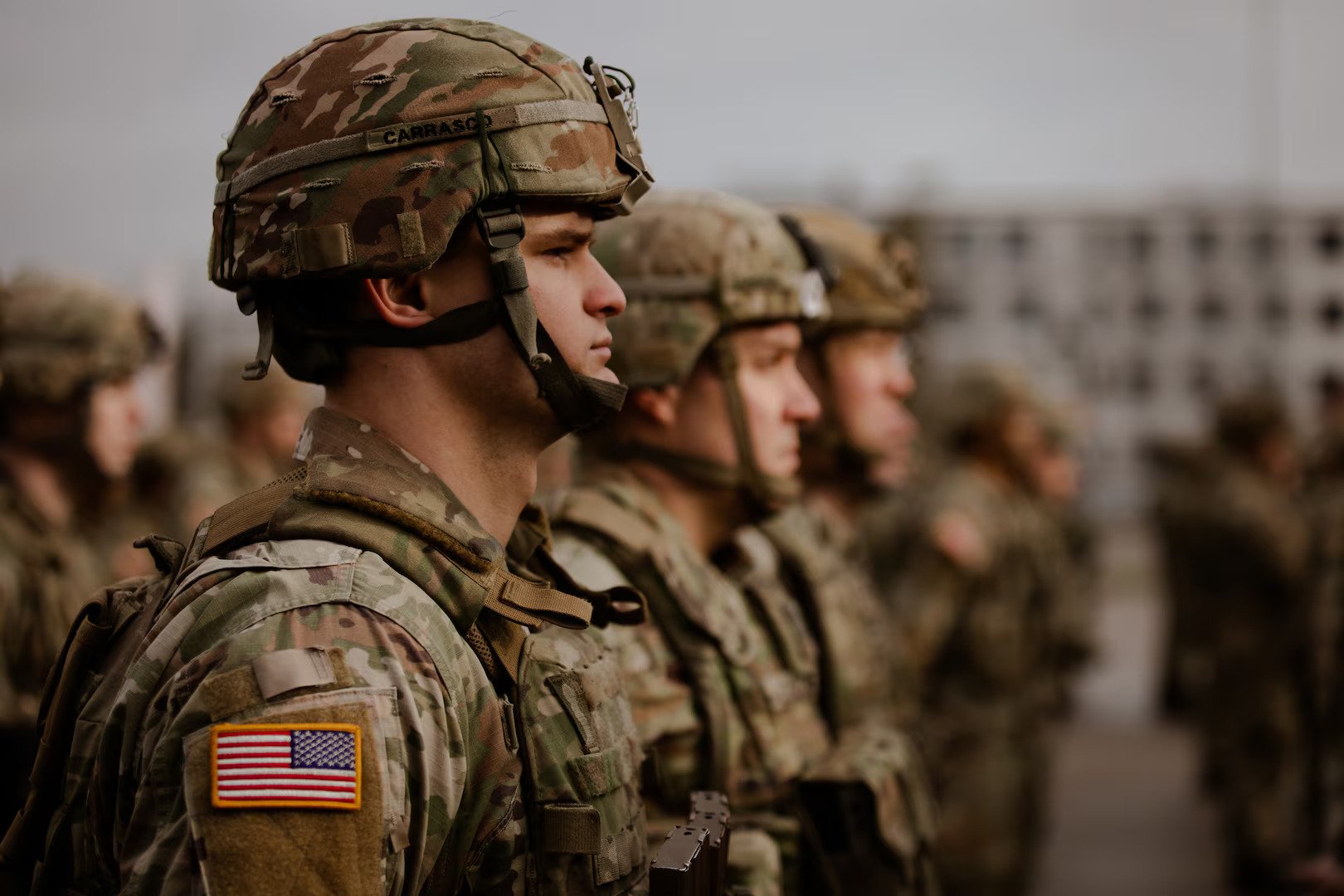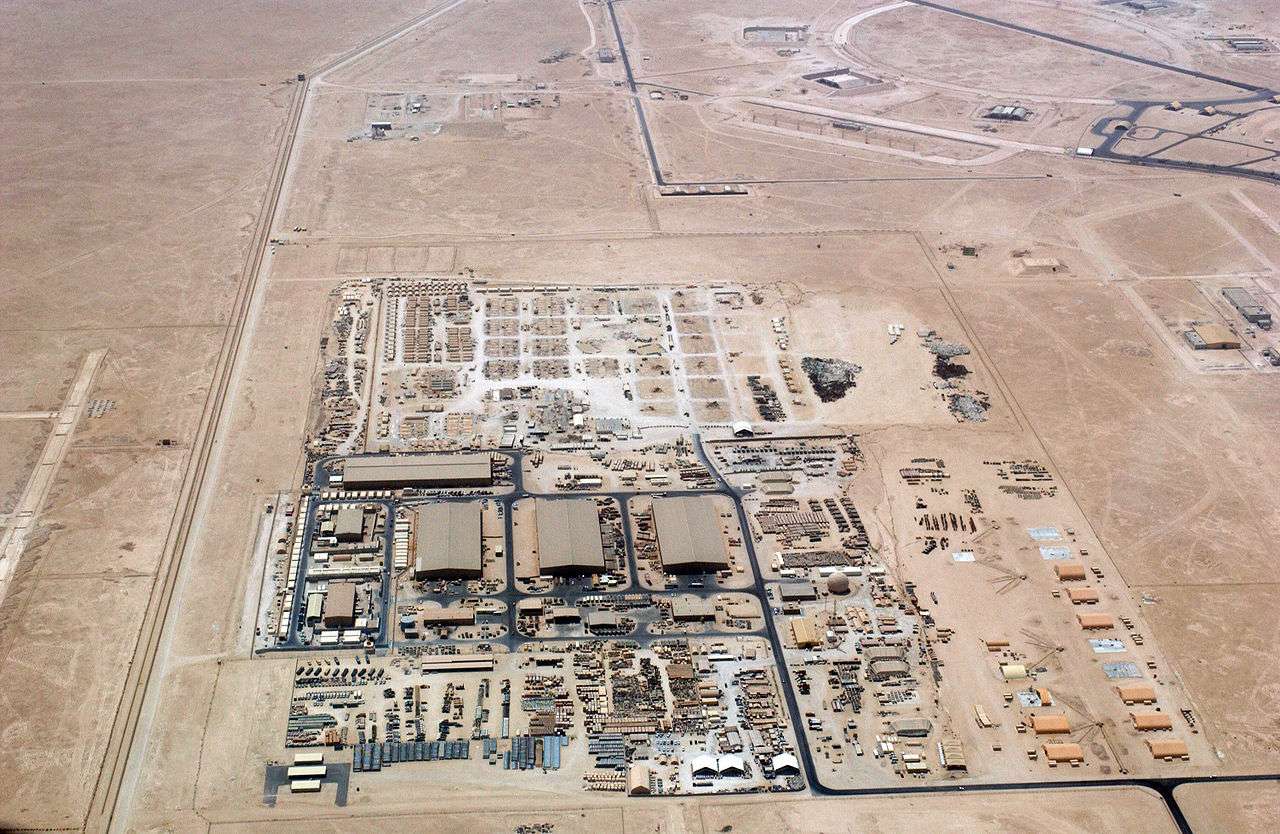Biggest US Base in Middle East

The US has a large military presence in the Middle East to secure the region, assist allies and carry out strategic operations. Among them, there are several installations that are distinguished by their size, significance to the operations, and the place in the U.S. defense strategy.
This tutorial identifies the three largest military bases of the U.S. in the Middle East and describes their main characteristics, operations, and strategic importance. These bases are vital to the stability and power projection in the region whether in air operations, naval command or ground logistics.
1. Al Udeid Air Base – Qatar

- Location: 25°07′07″N 051°19′07″E
- Built: 1996
- In Use: 1996 – Present
- Area: 12 square miles
- Operated by: Qatar Emiri Air Force, U.S. Air Force, Royal Air Force
- ICAO Code: OTBH
- Elevation: 40 metres (131 ft) AMSL
- Runways:
- 16L/34R: 3,750 metres (12,303 ft) – Asphalt
- 16R/34L: 3,750 metres (12,303 ft) – Asphalt
The Largest U.S. Base in the Middle East
The most important U.S. military facility in the area is Al Udeid Air Base, which accommodates more than 10,000 people and nearly 100 aircraft. It is the home of U.S. Central Command (CENTCOM) and U.S. Air Forces Central Command (AFCENT) and therefore a key center of air operations, logistics and intelligence.
Key Features:
- Strategic Command Center: Coordinates air operations across the Middle East and Central Asia.
- Advanced Aircraft Deployment: Hosts bombers, fighters, refueling tankers, and reconnaissance planes.
- Allied Collaboration: Joint operations with Qatari and British forces enhance interoperability.
- Expanded Infrastructure: Continuously upgraded to support long-term missions and rapid deployment.
2. Naval Support Activity Bahrain – Bahrain
- Type: U.S. Navy Main Operating Base
- Opened: 1997 (originally established in 1971)
- Current Commander: Captain Zachariah D. Aperauch
- Garrison: U.S. Fifth Fleet, Patrol Forces Southwest Asia
Headquarters of the U.S. Fifth Fleet
This base is the main naval center in the Persian Gulf, which hosts over 9,000 staff and essential maritime activities. It provides security in strategic shipping routes and it combats regional threats.
Key Features:
- Fleet Command: Directs naval operations, including carrier strike groups and amphibious forces.
- Missile Defense Hub: Hosts Aegis-equipped destroyers for regional missile defense.
- Modernized Facilities: Major expansions (2010–2015) enhanced docking, logistics, and command capabilities.
- Regional Partnerships: Works closely with Gulf Cooperation Council (GCC) navies.
3. Camp Arifjan – Kuwait
- Location: 28°52′41″N 48°09′28″E
- Operator: U.S. Army
- Controlled by: U.S. Army Central (ARCENT)
- Key Structures:
- Helipad: 75 x 75 ft (Concrete)
- Vehicle Staging Area: 200 x 200 ft (Asphalt)
Forward Logistics & Troop Hub
Camp Arifjan is a key staging area of the U.S. Army in Iraq and the Middle East. It facilitates troop deployments, equipment storage and rapid response missions.
Key Features:
- Logistics Center: Stores and distributes military hardware, vehicles, and supplies.
- ARCENT Forward HQ: Coordinates ground operations under CENTCOM.
- Training Facilities: Prepares troops for desert warfare and regional contingencies.
- Strategic Location: Proximity to Iraq ensures quick reaction capabilities.
Frequently Asked Questions (FAQ)
Which is the largest U.S. base in the Middle East?
Al Udeid Air Base in Qatar is the largest, spanning 12 square miles and hosting over 10,000 personnel.
What is the main role of Naval Support Activity Bahrain?
It serves as the headquarters for the U.S. Fifth Fleet, overseeing naval operations in the Persian Gulf and Arabian Sea.
Does Camp Arifjan support combat operations?
Yes, it functions as a logistics and command hub for U.S. Army missions in Kuwait, Iraq, and beyond.
Are these bases permanent?
While the U.S. maintains long-term agreements with host nations, their presence depends on strategic needs and regional security conditions.
Conclusion
The U.S. military has a significant presence in the Middle East with Al Udeid Air Base (Qatar), Naval Support Activity Bahrain and Camp Arifjan (Kuwait). These facilities are essential to air superiority, sea protection, and terrestrial logistics, stability, and quick reaction.
To a defense analyst, military personnel, or anyone interested in global security, the knowledge of these bases will give an idea of how the U.S. strategizes and projects its power in one of the most important regions in the world.
